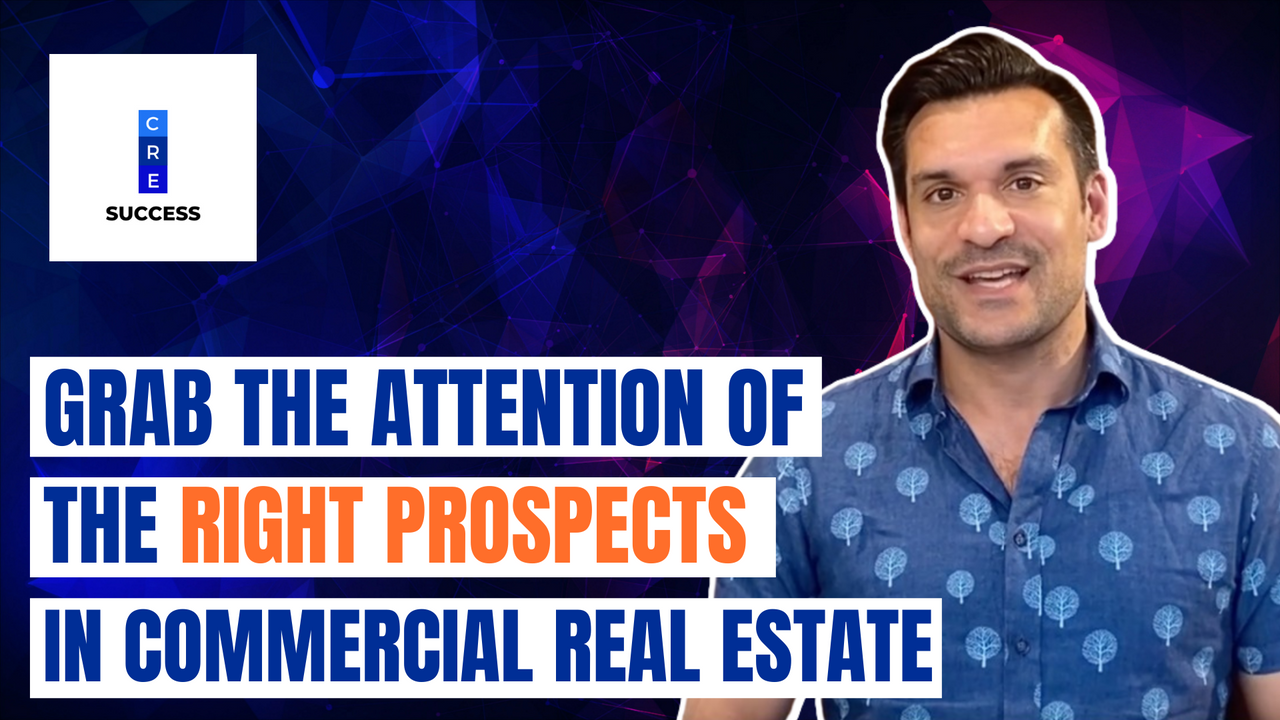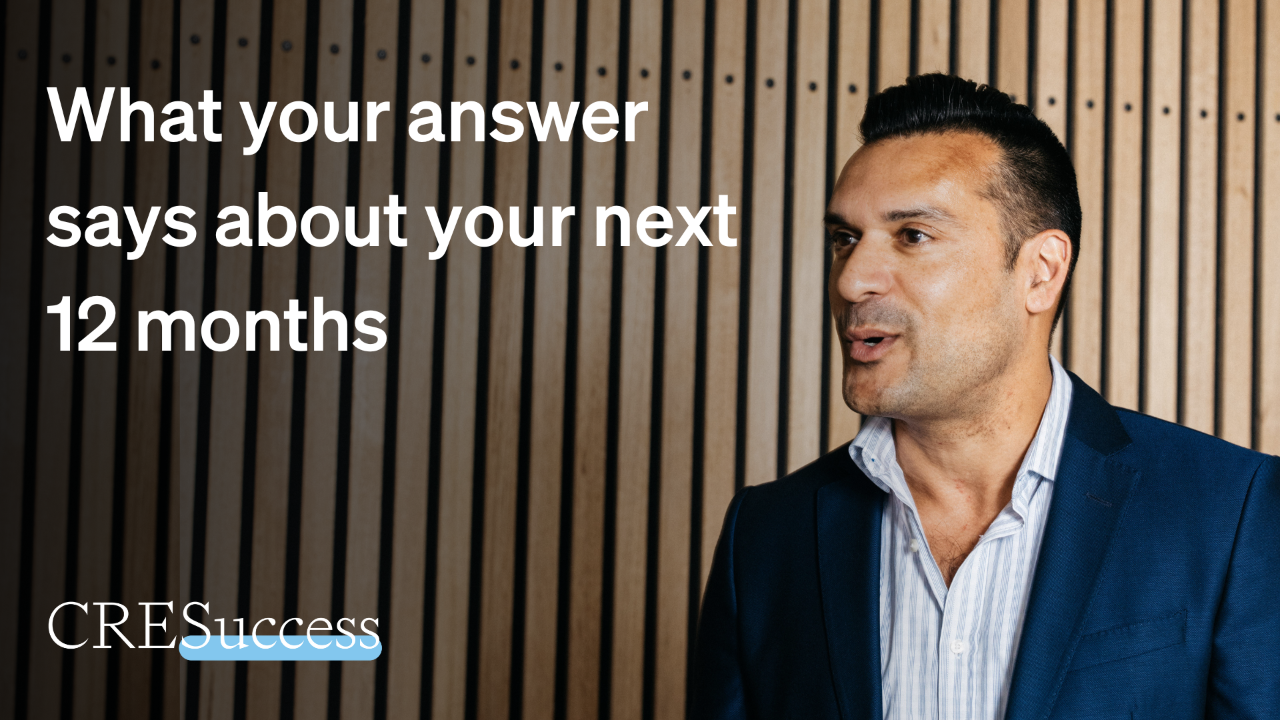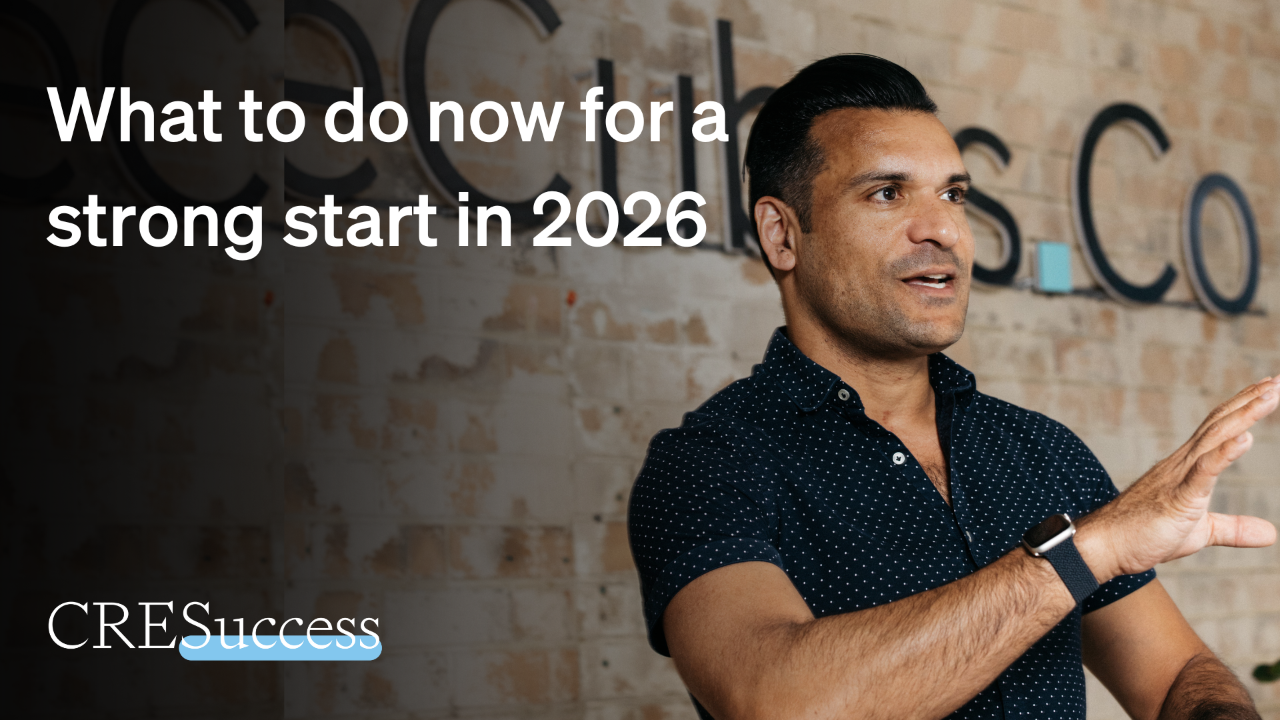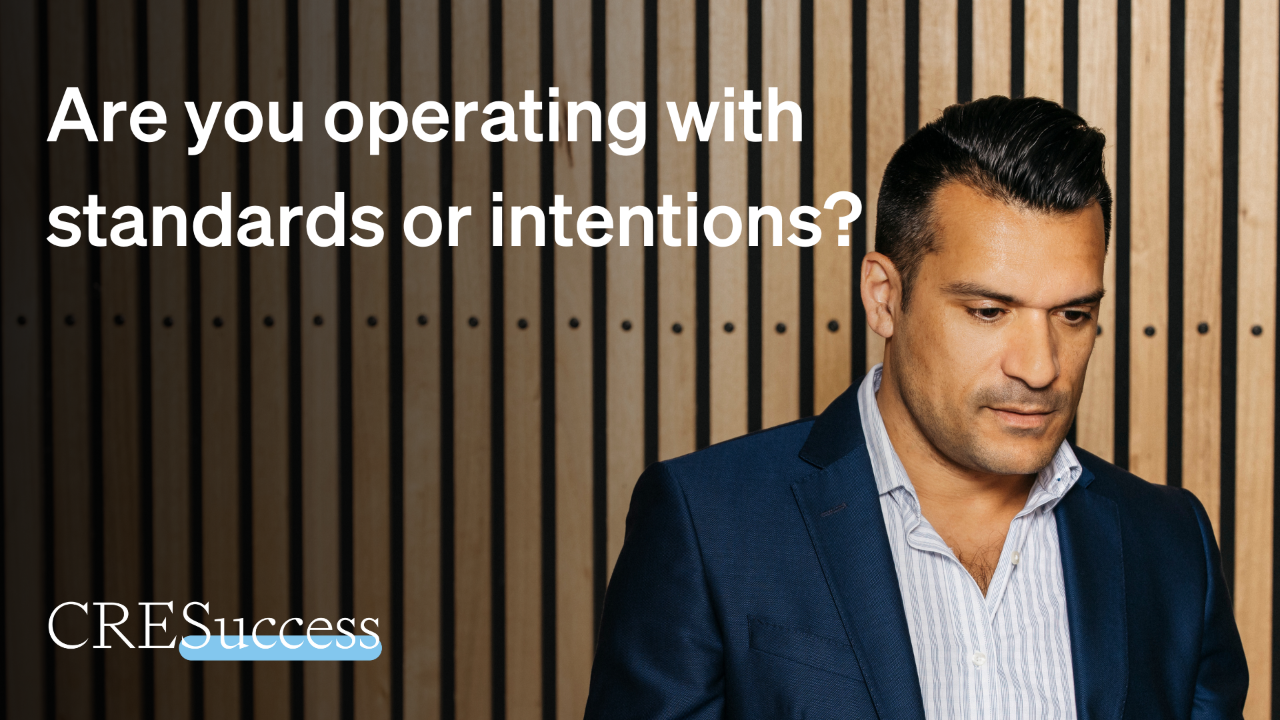Here’s how to make it crystal clear who you’re talking to
Mar 10, 2022
“Are you talking to me?” is a tough-guy line that was also used to great effect by Robert De Niro in the 1976 classic “Taxi Driver”.
If everyone wonders if you’re talking to them when they read your social media posts or email marketing, then you’re likely missing the mark.
But it’s not a bad thing when some people can easily tell that you’re not talking to them.
Because if your communication is so clear that the people you do want to reach are in no doubt that you are talking to them, that’s exactly what you want!
The most efficient and effective way to grab the attention of your ideal future customer is by creating a customer avatar (or buyer persona) and then speaking directly to them through leveraged communication channels.
For the step-by-step formula on how to do this, check out episode 78 of CRE Success: The Podcast.
Episode transcript:
How would you like to acquire a new skill that will make you more efficient, will help you build your personal brand, and will also attract more of the right leads?
If that sounds like a good use of about 12 minutes, then don't go anywhere, because that's what we're covering on today's episode of CRE Success: The Podcast.
It is episode 78, my name is Darren Krakowiak. And I'm here to help commercial real estate professionals save time earn more and be top performers in their market.
And I'm really living up to the top performer commitment over the past few episodes.
The past three, in fact, I've been covering different aspects of the top performer program, which is something that I've rolled out now with a few different cohorts of students.
And I'm going to be inviting another cohort to join in just a couple of weeks. And I want you to be part of it, if you would like to.
So, if you want to learn more, you can go to cresuccess.co/topperformer
And the content that I'm covering today is from one of the six modules in that program, which is building your brand.
I think it also touches on efficiency and effectiveness and also purposeful prospecting.
If you want to grab the abilities, habits and tools to be a top performer, then you want to at least check out what the program is all about and be one of the first people to find out when we do welcome in our next group of students.
Go to cresuccess.co/topperformer for all the information and I will put that link in the show notes so you can get yourself on that waitlist.
So today I want to talk to you about avatars.
And I was thinking about a way that I could talk about Avatars but not talk about the movie Avatar, which I just found out was I just mentioned the movie, but by talking about another movie, because I'm a movie buff
And I can remember a movie that is from before I was born. Now obviously I didn't see it before I was born. I saw it after I was born.
But it's such a classic movie that I'm going to give you the line from the movie. And we'll see how much of a movie buff you are, if you know this movie, and then I'll explain why it's relevant to the concept of an avatar.
So, the line is, "You talking to me?"
I'm not going to do the full voice because you know, that would just be embarrassing for everyone.
But that line is from Robert De Niro from the movie Taxi Driver that was released in 1976.
So, if you're over 46 years of age, you may have been born at the time of being released.
But if you weren't, you've probably at least seen the classic scene where he is looking in the mirror like a crazy person asking if that person who's speaking him in the mirror, which is him is talking to him.
Great movie with Jodie Foster a good one to check out.
Now, the reason why I bring that up is because when you send out a social media post, when you send out an automated email, or when you do anything which is a leveraged form of communication, that is, you send it out once but many people see it, the person who receives it may be wondering if you are talking to them.
Because people receive so many different messages and communication nowadays, because people can use automation and digital forms of communication to send out mass messages.
So, there are so many different messages that are going out there that so many of them either are getting missed, or they're not hitting the mark, because they're not seen as relevant to the people who they are being sent to.
The way that you can prevent yourself from being lost in the noise is by creating an avatar, and thereby sending out messages to the market that are more likely to be seen as you actually talking to the person who you're sending the message to.
So, that was a bit of a long-winded example of why I wanted to quote from that movie, but I think the point has been made.
And let's talk about now what an avatar is.
An avatar is a representation of the person who you want to do business with or who is a representation of who you're already typically doing business with.
There are two ways to create an avatar. You could imagine a person who you actually know a real person and say that, that person is a good representation of my ideal future client, and the person who I'm trying to communicate with.
So, when I'm sending out emails that are mass communication, when I'm posting something on social media, when I'm talking on video, when I'm recording a podcast (if you're recording a podcast), when you're in an interview, you are specifically talking to that person.
Even though you're not using their name, your kind of imagining that they are on the other end, the receiving end of the message.
And that allows you to speak in a more personalized way. And you'll be able to tap into hopefully not only what's important to them, but what's important to people like them.
Because they're the representation, they're the avatar that you've created, who you want to talk to in your leverage communications.
Now, the other way to do it, if you can't think of the person who is a good representation of who it is that you want to be talking to, is just to create an avatar.
And creating an avatar involves constructing a persona, and getting as specific as you possibly can.
So, when you are communicating to your audience, that you're communicating in a way that is hyper specific, because you know how old they are, their gender, what they like to do on the weekend, what they might be thinking about, what's important to them.
So, developing an avatar is useful because it helps you create content, whether that's content for social media, whether that's for emails, whether it's writing a campaign for a leasing property, and you're writing the actual marketing copy that's going to be put up in the newspaper or on digital platforms or on a signboard.
It allows you to hopefully, speak in a way which is more direct, has more purpose.
And as you develop more information about your avatar, whether it's by getting to know this specific person who you've said will be your avatar, or by collecting more information about your audience, you can then even speak more directly to them.
When you're doing leveraged content and marketing communications, because you know more about this person or that you've created or the person who is your avatar.
So, if you are recording a video, you just imagine you're speaking directly to that person.
When you're setting up an automated email sequence, you're writing that email campaign in your mind directly to that person.
Now, one thing that you might be wondering is, well, "What about if I get too specific, and I say something which resonates with that specific avatar that I've created, but then misses the mark with others?"
Well, there's a couple of things that you can do to avoid that.
And then I also want to point out that sometimes that's not necessarily a bad thing.
So, the first thing that you can do is to ask questions, rather than make assumptions.
You see, I just said, you might be wondering. I didn't say you must be wondering, I said, you may be wondering.
And that means that I'm guessing, but I'm not assuming.
A way you can construct this, when you're, for example, typing an email or posting something on social media is to say, "If you have ever x, then you may be thinking, why?"
So, as I'm creating content for CRE Success, I may put out something like this, "If you have ever been waiting for a prospect to call you back, you may have thought to yourself, what is it that I did to cause this person to not contact me?"
Or maybe you're worrying the deal is dead, right?
So, I haven't said that, "For sure you're thinking it."
I'm just saying, "If you've ever been in this situation, then you may have been thinking this."
If you're looking to speak to prospective landlords who own properties, and you're looking for them to contact you for an appraisal, one sentence, I'll just give an example of something that you might want to put into some email communication.
You might say something like, "If you've noticed the record setting results for auctions in the Melbourne retail market, you may be curious about what your property is currently worth."
Okay, so I've said, "If you're this, then you may be... right?"
So, I haven't assumed that the person reading it is that but if that person does resonate with what I've just said, then they're more likely to read on.
And here's the thing. If the person who reads it says, "You know what, that's not me." That's fine. Then move on.
Because when you're posting on social media, for example, people are going through scrolling, and they're looking for stuff that's relevant for them.
People are more likely to spend more time on your content if they think it's relevant for them.
And if it's not relevant for them, then that's okay. Same with the emails, right?
If we send out an email to 1000 people like an EDM, if 20% of people open that email, that's pretty typical.
And if say 1% of people actually click through, because they're the ones who really believe that this is a message for them, then 10 People have actually hit the link, that's the click through rate.
And that would mean that we've actually got 10 People who we can then follow up with in a personal way.
So, in the example of the record setting results for auctions, we might actually go, "Here's some results that you might be interested in."
And then by us monitoring who's clicked on those results, we can then follow up with them.
The other thing that you can do, of course, is just to put in a call to action.
So, on social media, you can say, "If you're interested, then do this."
Or in the email, "If you'd like to know more, then please do that."
So, make a specific call to action, which generates a response. So, then you're allowing people to filter themselves into being relevant for what it is that you have actually put out there in the first place.
So, I hope that this is helpful for you in terms of helping you create content for social media or write emails, which are more relevant to the people who you're trying to target.
I think, you know, when you actually imagine that you're writing to a person as opposed to just sending out an email blast to the world wide web.
Assuming it's a real person on the other end is just going to make it more personal.
You'll be speaking more likely human being as opposed to just speaking like a marketing person who's just sending stuff out into the world wide web.
I want to give you some bonus material because you hang around to the end. I appreciate you hanging around to the end.
At the end of each of the modules inside top performer, I provide a range of bonus material.
Some of them, I can't give you because they're sort of locked inside the CRE Success Portal.
But some of the bonus materials that I do direct people to are just previous episodes of the podcast.
So, if what I've been talking about today about creating content that resonates more with people is something that you want to go further with, I've got a couple of previous episodes of the podcast you can check out.
One of those episodes is from season 2. It's episode 1 with Nina Christian, where we talk about her framework for content that resonates authority, also making sure that you build affinity and that you create awareness. That one was released in April 2021.
Or you could check out Season 1, bonus episode five, which is called the Social Media bonus episode, where you'll hear from, I think, it's five commercial real estate professionals talking about how they use social media to build up their personal brand. That one was released in December 2020.
For more details on top performer, go to cresuccess.co/topperformer for more information.
I'm going to quit while I'm ahead and wrap up today's episode. Thank you so much for listening, and I will speak to you soon.








